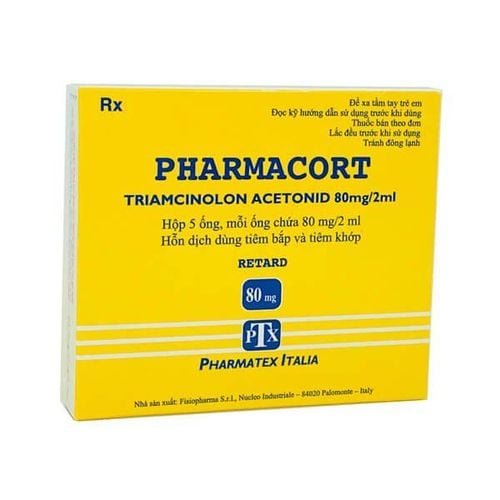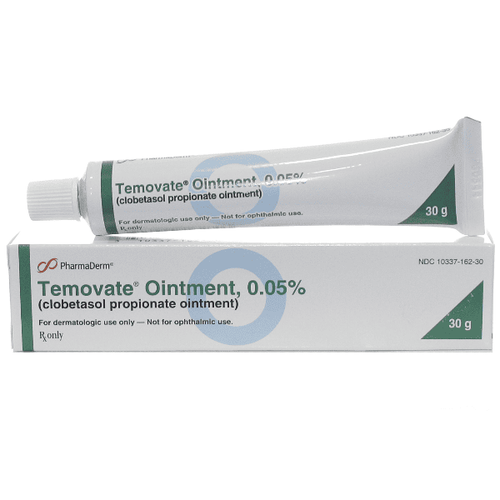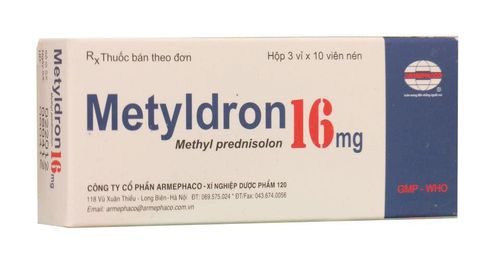This is an automatically translated article.
Psoriatic arthritis is a type of arthritis that affects people with skin psoriasis. It often causes the affected joints to become swollen, stiff, and painful.
1. What is joint psoriasis?
Psoriatic arthritis and psoriasis are autoimmune conditions. The immune system protects us against diseases and infections. In autoimmune conditions, the immune system becomes dysfunctional and attacks healthy parts of the body. It is estimated that about 1 in 5 people with psoriasis will develop psoriatic arthritis. Psoriatic arthritis is the cause of pain, swelling, and stiffness in the joints. It affects people who already have psoriasis. Sometimes the symptoms of arthritis appear before the signs of psoriasis arrive.
People with psoriasis are also more likely to develop other types of arthritis, such as osteoarthritis or rheumatoid arthritis. These conditions are not related to psoriasis.
Like psoriasis, psoriatic arthritis is a long-term condition that can get worse. If it's severe, you're at risk of permanently damaged or deformed joints, and may need surgery. But if psoriatic arthritis is diagnosed and treated early, disease progression can be slowed and permanent joint damage can be prevented or minimized.
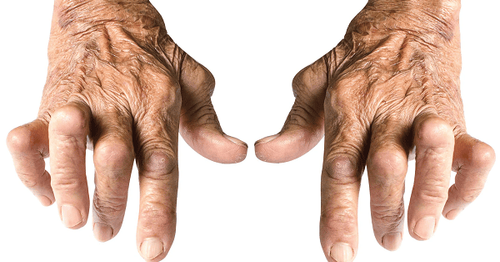
Người bị bệnh vẩy nến cũng có khả năng mắc viêm khớp dạng thấp
2. Who has osteoarthritis psoriasis?
This joint pain affects about 30% of people with psoriasis. It is common in both men and women and can begin at any age. But there are a few groups of people who are more likely to get psoriatic arthritis:
People who already have psoriasis, and nail lesions People who have a family member with psoriatic arthritis People who are currently suffering from psoriatic arthritis. between the ages of 30 and 50 Many people can develop psoriatic arthritis without any signs of the skin condition. Sometimes a viral or bacterial infection can trigger it if the body is already predisposed to the disease. Joint pain usually begins about 5 to 12 years after psoriasis symptoms appear.

Đau khớp ảnh hưởng nhiều đến người bị bệnh vẩy nến
3. Symptoms of joint psoriasis
One of the main symptoms of psoriatic arthritis is pain, swelling, and stiffness caused by inflammation inside the joint. Other symptoms include:
Swollen fingers and toes that look like sausages, known as dactylitis. It usually affects one or two fingers or toes at a time. Feeling stiff and tired when you wake up or after you sit for a long time. Lower back pain. Foot pain, especially in the back of the heel or sole of the foot. In some cases, this pain can make standing or walking difficult. Nails that are pitted or separated from the nail ridge. Red and sore eyes. Joint pain can be of two types as joint pain on one side or both sides of the body. While the condition usually gets worse over time, periods of pain are sometimes mild and then intense again.

Đau lưng dưới là triệu chứng phổ biến của bệnh
4. Psoriatic arthritis that affects other parts of the body
Psoriatic arthritis can put people at risk of developing other health conditions and complications on certain body parts.
Eyes
Seek medical help if one or both of your eyes are red and painful, especially if there is a change in your vision. These symptoms are caused by a condition called uveitis, also known as iritis. They can permanently damage your vision if left untreated. Other symptoms are:
Blurred or blurred vision Sensitivity to light Unable to see things on the side of the field of vision, called peripheral vision loss Small shape moving across the field of vision. These symptoms may come on suddenly, or gradually over a few days. It can affect one or both eyes.
Heart
Psoriatic arthritis may put you at a slightly higher risk of heart disease. You can reduce your risk by:
Don't smoke Keep weight Get regular exercise Eat a healthy diet that's low in fat, sugar and salt Don't drink too much alcohol Lifestyle choices This positivity can help improve arthritis and skin symptoms.
Crohn's disease
Crohn's disease is a condition in which parts of the digestive system become inflamed. See your doctor if you have any of these symptoms:
Diarrhea for more than seven days, blood in your stools Frequent pain, pain or cramps in your stomach Feeling unwell, fever Losing weight clear reason
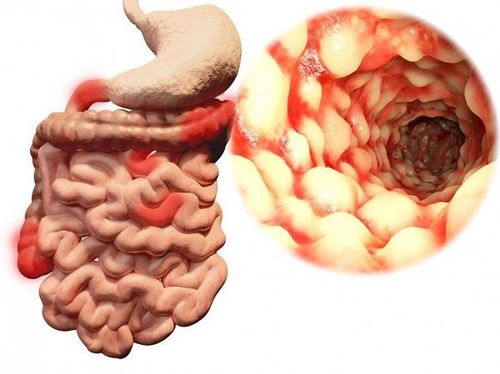
Viêm khớp vẩy nến có thể gây ra bệnh Crohn
Nonalcoholic fatty liver disease
Nonalcoholic fatty liver disease (NAFLD) is a term used to describe a number of conditions where there is a buildup of fat in the liver. It can lead to cirrhosis, which is when the liver gets scarred and can stop working properly. See your doctor if you have:
Feeling extremely tired Pain in the upper right side of the abdomen, which may be dull or aching Unexplained weight loss Yellowing of the skin and eyes, known as jaundice Itching skin Swelling in the legs, ankles, feet, or abdomen.
5. Treatment of psoriatic arthritis
Treatment of psoriatic arthritis aims to:
Reduce symptoms. Slow the progress of the condition. Improve quality of life. This often involves trying several different medications, some of which can also treat psoriasis. If possible, you should take 1 medication to treat both psoriasis and psoriatic arthritis. The main drugs used to treat psoriatic arthritis are:
Non-steroidal anti-inflammatory drugs (NSAIDs) Corticosteroids Disease-modifying anti-rheumatic drugs - DMARDs) Biological Therapy

Corticosteroid có tác dụng điều trị bệnh vẩy nến
6. What should you do?
Talk to your doctor if you have joint pain to get psoriatic arthritis diagnosed and treated as soon as possible. The goal is to keep the immune system from causing permanent damage to the joints. Treatment can also keep the inflammation after psoriasis and psoriatic arthritis from affecting other parts of the body.
You may need to see a doctor who specializes in arthritis to find a range of psoriatic arthritis treatments that are right for you. Starting the right treatment as soon as possible will help you best manage your arthritis and minimize damage to your body. Psoriatic arthritis can vary greatly from person to person. Psoriatic arthritis can cause long-term damage to joints, bones, and other tissues in the body, especially if it's left untreated.
If you have a need for consultation and examination at the Hospitals of the National Health System, please book an appointment on the website for the best service.
Articles refer to sources: webmd.com, versusarthritis.org, nhs.uk





